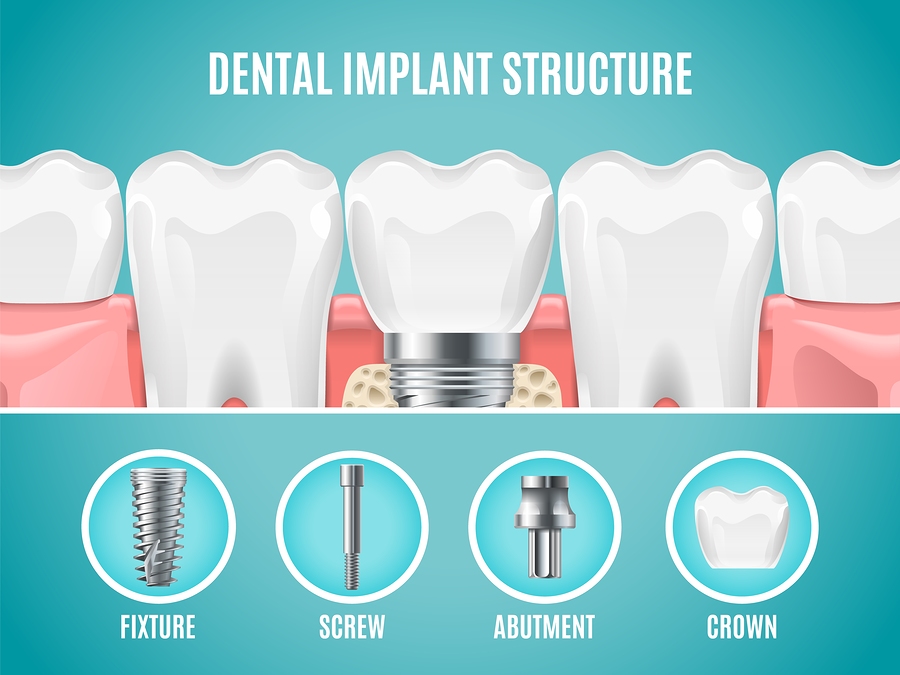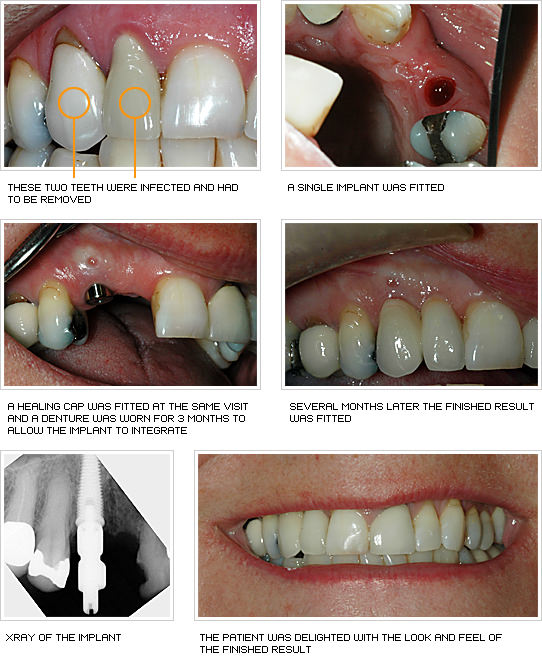The Main Principles Of Dental Sense
Table of ContentsHow Dental Sense can Save You Time, Stress, and Money.Not known Facts About Dental SenseThe 15-Second Trick For Dental SenseDental Sense - Truths
are clinical gadgets operatively implanted into the jaw to recover a person's capacity to chew or their look. They offer support for synthetic (phony) teeth, such as crowns, bridges, or dentures. When a tooth is shed because of injury or disease, an individual can experience issues such as fast bone loss, faulty speech, or modifications to eating patterns that result in discomfort.Dental dental implant systems consist of an oral implant body and dental implant joint and may also consist of an abutment fixation screw. Kids dental. The dental implant body is operatively put in the jawbone instead of the tooth's root. The oral implant joint is generally affixed to the dental implant body by the joint addiction screw and prolongs with periodontals right into the mouth to support the connected man-made teeth
(https://www.domestika.org/en/dentalsense1)Structure of The Dental Implant System selecting dental implants, speak to your dental service provider regarding the possible benefits and risks, and whether you are a candidate for the procedure. Things to take into consideration: Your general wellness is a vital element in identifying whether you are an excellent prospect for dental implants, how much time it will take to recover, and the length of time the implant might stay in area.
Smoking may impact the healing procedure and decrease the long-lasting success of the dental implant. The healing procedure for the dental implant body may take numerous months or longer, throughout which time you normally have a short-term abutment instead of the tooth. the oral implant treatment: Carefully follow the dental health directions provided to you by your oral supplier.
The Ultimate Guide To Dental Sense
Implant failing can lead to the requirement for an additional operation to repair or change the dental implant system. Restores the ability to eat Recovers aesthetic look Aids keep the jawbone from diminishing due to bone loss Preserves the health and wellness of the surrounding bone and gums Assists maintain surrounding (close-by) teeth steady Improves quality of life Damages to bordering all-natural teeth during implant positioning Injury to the surrounding tissues throughout surgical treatment, such as sinus perforation Injury throughout surgery (for instance, crack of surrounding jawbone) Poor function, such as seeming like the teeth do not bite together typically An experience that the tooth hangs or twisting in location resulting from an abutment screw loosening Implant body failure (looseness of the dental implant body) due to systemic infection, which may be more probable in patients with uncontrolled diabetes due to regional infection in bone and periodontals sustaining the dental implant body because of delayed recovery, which might be more likely in patients that smoke Difficulty cleaning up the gum tissues around the dental implant, causing inadequate oral health Neglected periodontal disease Post-surgical feeling numb as a result of nerve impingement or damages Constantly inform wellness care carriers and imaging professionals that you have dental implants prior to any kind of magnetic vibration imaging (MRI) or x-ray procedures.
FDA is not mindful of any type of adverse occasions reported for MRI or x-ray treatments with oral implants. Oral implants systems are commonly made from materials that adhere to international agreement criteria of the International Organization for Standardization (ISO) or ASTM International. These requirements have details of what makes a secure product.

A dental implant is a structure that replaces a missing out on tooth. With screw-like tools, the surgeon inserts an implant into the jawbone, and it acts as an anchor for a fabricated tooth, called a crown.
Our Dental Sense PDFs
Some people are not eligible for oral implant surgical procedure. It is for oral specialists to operate on people with: intense illnessuncontrollable metabolic diseasebone or soft cells disease or infectionIf these issues are settled, a person can have the surgery. In, oral cosmetic surgeons avoid operating on individuals with: If individuals with any one of the above go through dental implant surgical treatment, there is a greater threat of the implant failing.

Oral implant surgical procedure is a customized process. It's not the very same for everybody. The complying with provides a general summary of what you can anticipate your dental professional, dental cosmetic surgeon, periodontist or prosthodontist to do: Position the dental implant operatively. Offer you time to recover. Affix the post and last crown, bridge or denture.
Next off, your specialist will carefully place the oral implant into your jaw. Ultimately, your doctor will reposition your gum tissues and shut the laceration with stitches. If your implant is near the front of your mouth, your dental practitioner will make a short-term tooth for you to use until you heal. This way, you will not have a space in your smile while you recoup.
The Definitive Guide to Dental Sense
Your copyright can inform you what to expect in Kids dental your situation. Throughout the healing stage, your jawbone must fuse to the oral implant. This procedure, called osseointegration, is crucial for stability and lasting success. This process can take anywhere from three to nine months. In some instances, it may take longer.
As soon as your dental implant heals, your dental professional can attach the abutment (tiny adapter post) and your last restoration (crown, bridge or denture). This typically takes concerning one hour to finish and might need a second minor surgical treatment. You shouldn't feel any kind of discomfort throughout your dental implant procedure due to the fact that your provider will certainly utilize medication to numb your gums.